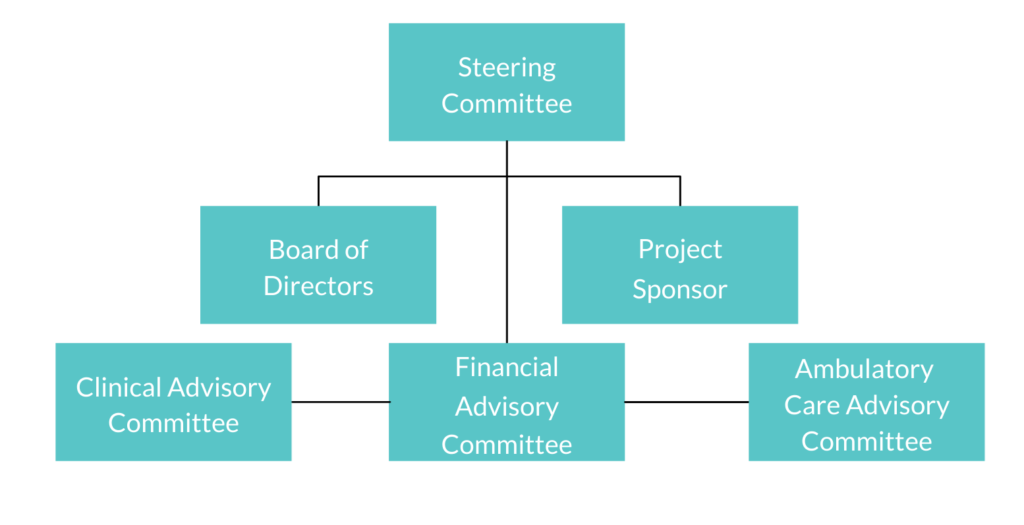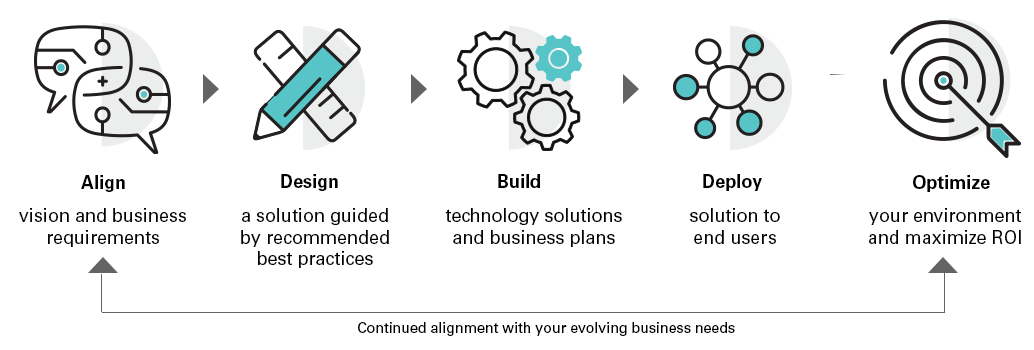Blog
5 Steps to Create a Governance Model to Become an IT Genius in Healthcare
Are you ready to be an IT genius?
One way to start is to better understand the biggest risk factors for IT project failures. In my experience, there are a few themes we see often that cause issues:
- Resource allocation
- Scope creep
- Poor communication
- Stakeholder management
- Unreliable estimates
- No risk management
- Unsupported project culture
Do any of these IT project risk factors sound familiar?
You can mitigate many of these issues by establishing IT governance.
In research published by HIMSS, “IT Governance in Hospitals and Health Systems,” authors Kropf and Scalzi explain, “IT governance is not about making specific IT decisions. That is management. Rather, governance is about systematically determining who makes each type of decision…who has input to a decision…and how these people (or groups) are held accountable for their role.”
A typical IT governance model looks like the diagram below, and includes:

- A steering committee, chaired by the CIO, CFO, COO, CNO to lead strategic planning, investment, organization, and decision-making.
- The board of directors, chaired by finance/CEO, and leads oversight and accountability.
- The advisory committees, include representatives from various departments, each with a senior IT staff member.
- Project sponsors can vary from CMO or CMIO, but essentially champion the project and are held accountable throughout the project’s life.
Every organization’s governance model is different.
So how can you set up a governance model? Here are five steps you should take.
Five steps to establish an IT governance model
1. Start with the basics
One key part is identifying the stakeholders. Stakeholders might include: CMOs, CIOs, third-party vendors, or nurses. It’s also important to educate members on the basics of corporate governance. Having employees understand the what and why behind governance will make the transition easier.
2. Prioritize business goals and initiatives
The steering committee will lead this step. Committee members will be able to develop goals based on their areas of expertise/departments and then work together to identify which should be a top focus. For example, if a CNO hopes to implement clinical decision support tools to lower readmission rates, it will take coordination (between the CIO, CFO, etc.) to prioritize and decide what resources/technology it will take to reach this goal.
3. Design processes
Your organization can gain a competitive advantage if the right system for prioritizing and getting approvals is in place. A solid, efficient structure for communication flow will help your governance model be successful.
4. Create the committees
It’s important to assign the right people to the right spot. Clear, defined roles will lead to less confusion when the model is deployed. Select committee members from different departments and make sure to include an experienced IT staff member in each. Project sponsors and the project management office will play a critical role by explaining the benefits of the new governance model and championing the project.
5. Communicate and campaign
Here’s the fun part! Educate the relevant teams on the processes, committees, and purposes. You have the chance to set the tone of how the governance will be accepted throughout the organization. Staff will be able to sense if senior management isn’t fully invested in IT governance.
Unfortunately, the work of IT governance is not over once you’ve established a governance model. For implementation to be successful, there are a few ongoing commitments.
- Getting clinicians involved
- Communicating regularly and with intent
- Creating a culture of transparency, trust, and credibility by relaying information
- Following a solid process and structure
- Senior management’s commitment
Let’s revisit the biggest risk factors for IT project failures and how governance can help:
How governance can help with IT project failure factors:
- Resource allocation: governance prioritizes resources, reduces conflicts between staff, and may make decisions to hire consulting or augmentation firms if the initiative warrants.
- Scope creep: a well-structured governance has included the right stakeholders to mitigate unauthorized additions to projects.
- Poor communication: communication protocols are set to ensure that relevant parties are in the loop and held accountable.
- Stakeholder management: the structure clearly puts accountability on defining a stakeholder with an overarching group for oversight.
- Unreliable estimates: governance committees have cross-collaboration departments in finance, PMO, and IT, so estimates include all perspectives.
- No risk management: governance requires communication of risk along with mitigation plans for the risk—there are more stakeholders looking for the success of the project.
- Unsupported project culture: a well-built model increases buy-in and commitment to project success.
How do you know when you’re not on the right track? Watch for these seven symptoms of ineffective governance.
Seven symptoms of ineffective IT governance
- Low value from IT investments
- Unable to implement new strategies
- Decision-making is slow/contradictory
- Senior management cannot explain governance
- Projects run late and over budget
- Senior management sees outsourcing as a quick fix
- Governance changes frequently
Real-world example from our governance model
At Spok, we use a governance model to ensure our technology implementations are aligned to achieve our customers’ goals. We’re here every step of the way!

The benefits of creating an IT governance model is to align your IT strategy to support the strategy of your organization. Your framework will give you a good way to assess progress, and track metrics and ROI. There will be surprises along the way, but the model will reduce communication errors and improve IT project efficiency and delivery.






